Specific application of floor leveling mixes
Impeccably flat surface of the subfloor is the dream of our compatriots, the embodiment of which until now, developers unconditionally trust the future owners. In this regard, new buildings differ slightly from residential facilities of the secondary fund with creaking skewed floors. But the owners have the opportunity to show creative abilities, to master this area of activity and to test in practice wonderful mixtures for leveling the floor, capable of providing ideals of geometric parameters.
A perfectly aligned floor plane cannot be attributed only to aesthetic criteria. This is a guarantee of long-term operation of the coating laid on a flat surface, and often the condition necessary for safe movement. A flat plane is a requirement for the installation of floating floors, for laying linoleum, laminate, parquet, clinker tiles. Alignment is necessary so that the wooden floor does not creak, so that the lock joints of the coatings do not break, individual elements are not abraded.
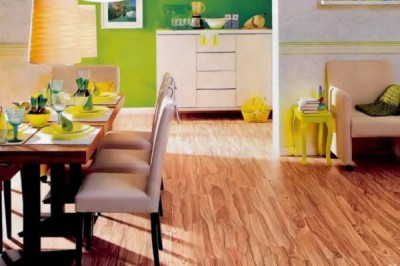
Content
Cheap alternative to factory mixes
Not so long ago, the only mixture designed to eliminate the flaws of builders was a solution consisting of sifted river or quarry sand, water and ordinary cement. The result achieved with its help did not always please the repairmen and owners. Hardening had to wait at least 28 days, the surface sagged in places, the hardening cement screed had to be constantly sprayed with water to prevent cracking.
However, the budget cost of this material for leveling often convinces the economical owners of the possibility of using the simplest, but requiring a lot of effort in the preparation and application of the option. For independent manufacture of the composition you will need:
- one part of cement marked M500;
- three parts of sand without inclusions and impurities (fraction size 5 mm).
First, the composition is thoroughly mixed without introducing water, then it is added in small portions, bringing the solution to the consistency of viscous thick sour cream. In the process of preparing the mixture, it is necessary to strictly observe the proportions, you need to use high-quality marked components. But even the use of components from reliable manufacturers does not guarantee a perfect screed, the surface will still need to be leveled after full hardening.
The “home-made” mixture does not have high ductility; it is rather difficult to apply and distribute it on the floor. To facilitate the work, you can add a plasticizer tube to the composition in strict accordance with the recommendations of its manufacturer.
Tip. To increase the strength characteristics of cement-sand mortar for screed, PVA glue in a small amount will help.However, it should be noted that the hardening of the mixture with glue will occur much faster, which means that you will have to dilute the composition in small portions and apply to small areas. Cleaning the screed with glue after hardening will be significantly more difficult.
To prevent the formation of cracks, experienced stackers add a little washing powder to the self-prepared leveler, so that moisture evaporates more slowly from the screed and crystallization occurs more evenly. But the slightest errors with self-modification of the solution will certainly affect the strength of the layer, which will require expensive alterations.
The benefits of ready-mixes for leveling
The extensive range of levelers currently on the market has a base that resembles the proven cement screed formula. The main components are a binder, represented by gypsum or cement, and aggregate, which is sifted and washed sand. The cardinal difference between the finished building compounds is the presence of modifying additives that optimize adhesion, ductility, and the curing period.
Due to the improvement of the formula, the area of implementation of these repair work has expanded. Now, in finished form, you can buy not only a leveler for concrete substrates, but also a mixture for leveling a wooden floor with fiberglass additives, necessary to ensure maximum adhesion values. New levelers can be used to equip the entrance groups of country houses, to prepare the surface before installing the floor on the terrace, porch, balcony. There are finishing varieties that do not require subsequent finishing. But in the overwhelming majority of mixtures for leveling are used as a layer located under the floor covering, since they emit dusty suspension, absorb fats and moisture, do not differ in external attractiveness.
In the list of advantages of ready-made mixes for leveling:
- maximum strength;
- optimal adhesion;
- Minimizing cure times
- simple application without the need to monitor the process of "ripening", increase the level of humidity by spraying;
- uniform, easy distribution throughout the cultivated area;
- the ability to choose a composition for leveling almost any base;
- lack of drawdowns requiring additional alignment actions;
- minimum power of a strong leveling layer, not affecting the height of the room;
- operational long term.
The main priority of the compositions prepared in the factory is a tested, clearly developed material formula with an accurate ratio of components. Repairmen who comply with the manufacturer's recommendations when introducing water into the composition may not worry about the final result, since errors that reduce the leveling quality are practically eliminated. In the list of shortcomings, the main place is taken by the cost, the sizes of which are compensated by long-term service, ease of preparation, a thoroughly verified formula of the material and the absence of the need for further refinement.
Classification of dry mixes for leveling
Factory dry mixes for floor leveling presented to the consumer vary in composition, these are:
- Universal cement mixes, suitable due to the abundance of modifications for leveling floors in rooms with any operating conditions. In the assortment you can find material for leveling the base of any structure, with any number of influxes, sinks, recesses. Factory-based mixtures based on non-shrinkable cement are used for applying leveling layers with a thickness of 3 to 50 mm.
- Plaster levelers, used only for the arrangement of rooms with a minimum level of humidity, since their base has the ability to intensively absorb moisture. Gypsum mixtures are distinguished by good vapor permeability and the absence of shrinkage, on the basis of which they are often preferred for leveling the base, not very high strength.
According to the purpose and sequence of application, factory mixtures are divided into two types:
- Leveling, intended for initial processing of rough surfaces with significant defects. With their help, reliable bases with a thickness of up to 50 mm are formed. This type of leveler is applied manually. The material is used only as a layer, since the large particles of sand that make up the solution do not allow a perfectly smooth surface.
- Self-leveling materials used for applying the topcoat. The thickness of the layer is 2-10 mm. A fluid solution with fine particles is evenly distributed on the treated area independently by spreading. To align large areas, the composition is closed and distributed using special equipment.
Note. Filling of finishing levelers in large-sized rooms (more than 6-8 m²) is carried out in areas limited by special devices. Between segments, technological joints with a size of 6 mm are left unfilled with mortar.
To fill quick-hardening, self-leveling material, one artist is not enough, this team often performs this operation, each member of which has a specific function: preparing the mixture, pouring the solution, distributing using a special tool, eliminating air bubbles with a roller.
Prerequisites for a perfectly leveled surface
Despite the apparent identity, the factory mixtures of each of the manufacturers have a unique composition, patented and strictly protected by the manufacturer. It is not indicated in the labeling, but a detailed briefing on the method of preparation of the solution is necessarily attached to the product. Violation of proportions, the introduction of any additives in the finished mixture is unacceptable.
Important. It is impossible for economic purposes to increase the content of tap water, since excess moisture will cause foaming and, as a result, a loss of strength of the screed. The leveling layer may also delaminate. You can not use hot water, it can become a stimulant to start working components, the action of which should begin only during the hardening period.
A prerequisite is strict adherence to the temperature and humidity conditions specified by the manufacturer. With slight deviations, the limiting value of relative humidity is usually 90-95%, the temperature limits are 5-25 o C in the positive range.
Unconditionally, the consumption of the mixture for leveling the floor indicated in the marking must be observed. Depending on the specific characteristics of the solution and the purpose of the mixture, the flow rate varies from 1.4 kg to 1.8 kg, distributed per m² of area per 1 mm of layer thickness.
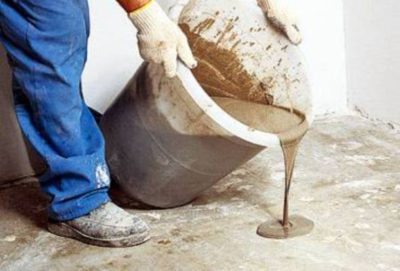
Important. It is categorically not recommended to use finishing solutions for leveling the base with the application of a layer that exceeds the possible limit. As a result, voids may appear inside the screed layer, the so-called “caramel effect”.
Before filling, window and door structures must be installed. Drafts and the use of ventilation devices are not permissible.It is necessary to accurately withstand the time required for the full curing of the leveler. Their violation is unacceptable when applying the equalizer in several layers. Before pouring the material, it is recommended to treat the entire floor area with a primer that improves adhesion.
Owners of residential property now have the opportunity to buy leveling mixes for arranging premises of any type and area. There is a choice: the owner can buy the finished mixture and level the floor yourself or order the services of repairmen. Information about the differences in the leveling mixtures, the methods of their application and the specifics will help not to make a mistake with the purchase of material.

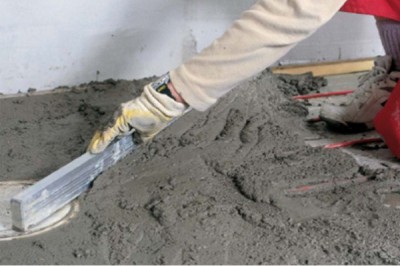
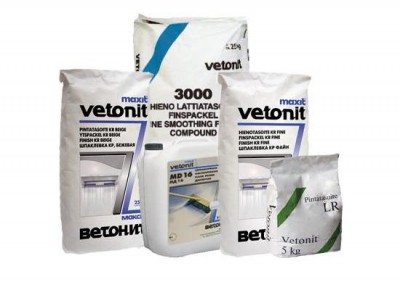
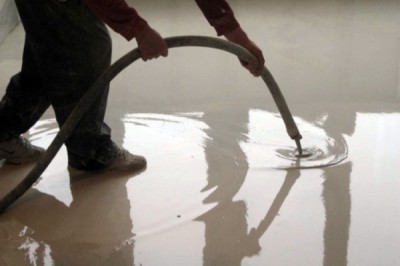

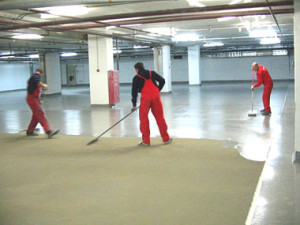
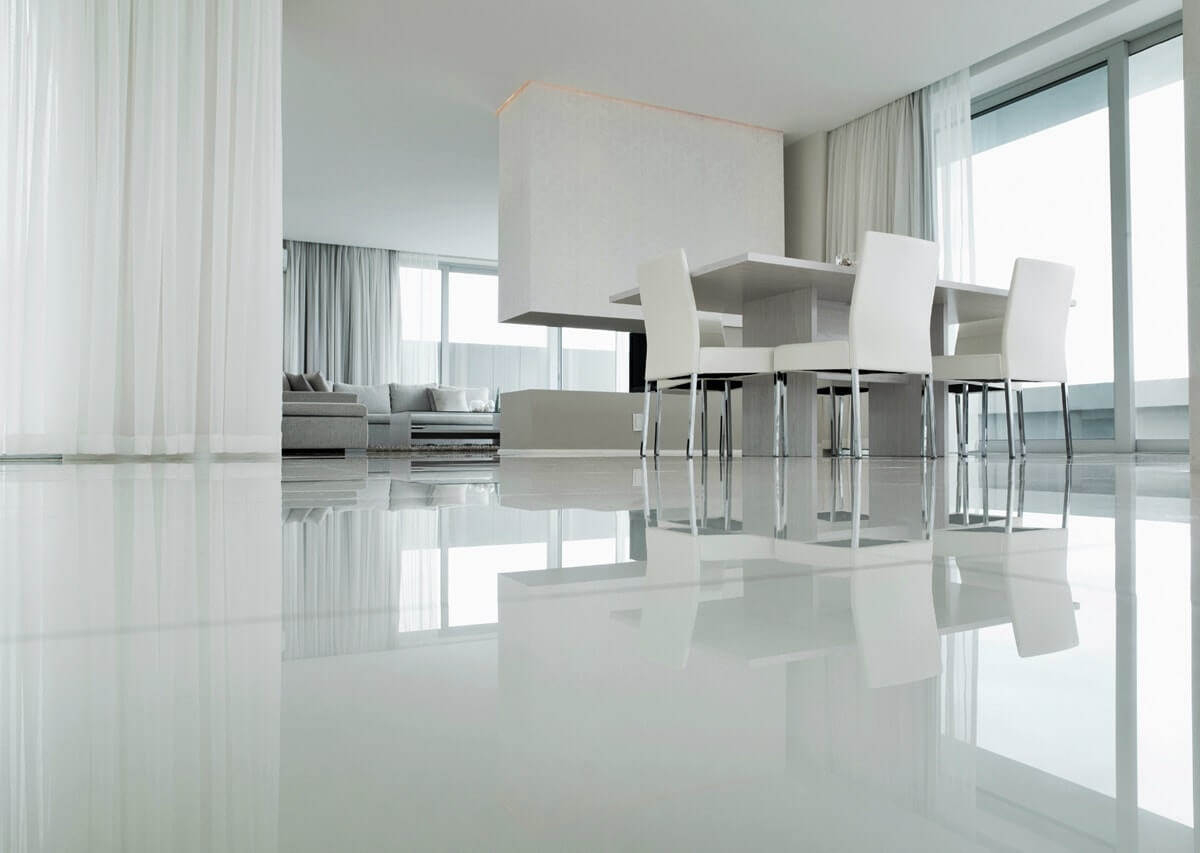
1 comment